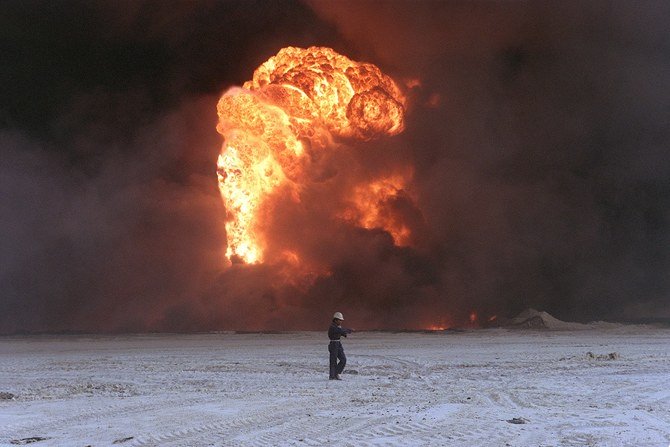- ARAB NEWS
- 03 Jul 2025

Khaled Almaeena
Saddam’s ‘horrible aggression’ led to the Gulf War, fragmenting the Arab world and creating lasting divisions
On Aug. 2, 1990, the Iraqi army swept into Kuwait, overwhelming resistance in two days, driving the government into exile in Taif, Saudi Arabia, and executing hundreds of Kuwaitis who resisted.
Relations between Iraq and Kuwait, which had supported Baghdad financially during the Iraq-Iran War, had deteriorated rapidly in the previous months. In addition to Kuwait’s refusal to agree to write off the large debt it was owed by Baghdad, tensions had been building over false accusations by Saddam Hussein that Kuwait was tapping into Iraq’s share of the Rumaila oilfield that lay between the two countries.
After Iraq defied UN resolutions demanding its immediate withdrawal, Kuwait was swiftly liberated by a US-led coalition force. However, military intervention stopped short of overthrowing Saddam, leaving unfinished a task that was not completed until the US war on Iraq in 2003.
JEDDAH: I was in Baghdad a mere two months before Saddam Hussein invaded Kuwait on Aug. 2, 1990. I was there with a group of editors and journalists accompanying the late King Fahd to the 17th Arab Summit in the Iraqi capital on May 30, 1990. I saw Saddam up close, with only a couple of feet between us.
At that time there was no inkling that he would invade Kuwait. Yes, there were rumblings of discontent and disagreements over Kuwait’s ownership of Bubiyan Island — but nobody imagined that two months after hosting the Arab leaders, his tanks would roll into Kuwait in what King Fahd rightly described as Iraq’s “most horrible aggression.”
Iraq invades Kuwait
UN Resolution 660 condemns the invasion and ‘demands that Iraq withdraw immediately and unconditionally.’
Saddam instals Alaa Hussein Ali, holder of dual Iraq-Kuwaiti nationality and a lieutenant in the Kuwaiti army, as head of a four-day puppet government in Kuwait.
UN Resolution 678 gives Iraq an ultimatum to withdraw from Kuwait by Jan. 15, 1991.

Saudi F-15s and Tornados take part in the first of a series of allied bombing raids on Iraqi military targets in Iraq and Kuwait.
Iraq fires the first of more than 80 Scud missiles it will unleash on Israel and Saudi Arabia during the brief conflict.
Iraqi forces seize the Saudi town of Khafji on the Kuwait border, but are driven out after two days.
Coalition ground troops cross into Iraq from Saudi Arabia.
US and Allied forces enter and begin the swift liberation of Kuwait.

A Scud missile hits US Army barracks in Dhahran, Saudi Arabia, killing 28 US soldiers.
Iraqi forces flee Kuwait, setting fire to oil wells as they leave. Thousands die on Highway 80, the so-called Highway to Death, when retreating troops are attacked by allied aircraft.

With Kuwait liberated, US President George H.W. Bush declares a cease-fire and Kuwait’s government returns from exile.

The invasion of Kuwait set off a chain of events with repercussions that continue today. It shattered forever the idea of Arab unity and fragmented the Arab world. That world never recovered, never returned to “normal” after the Gulf War.
There were countries that did not side with Saddam, but they remained quiet and this led to a deepening of suspicions that lingered in the unfortunate post-1945 Arab history. Those suspicions had become reinforced, embedded and fixed in the minds of the Arabs. There was mutual suspicion of each other’s intentions. While the Palestinians, the Jordanians and the Yemenis did not openly support the invasion, their wait-and-see policy angered the Gulf states.